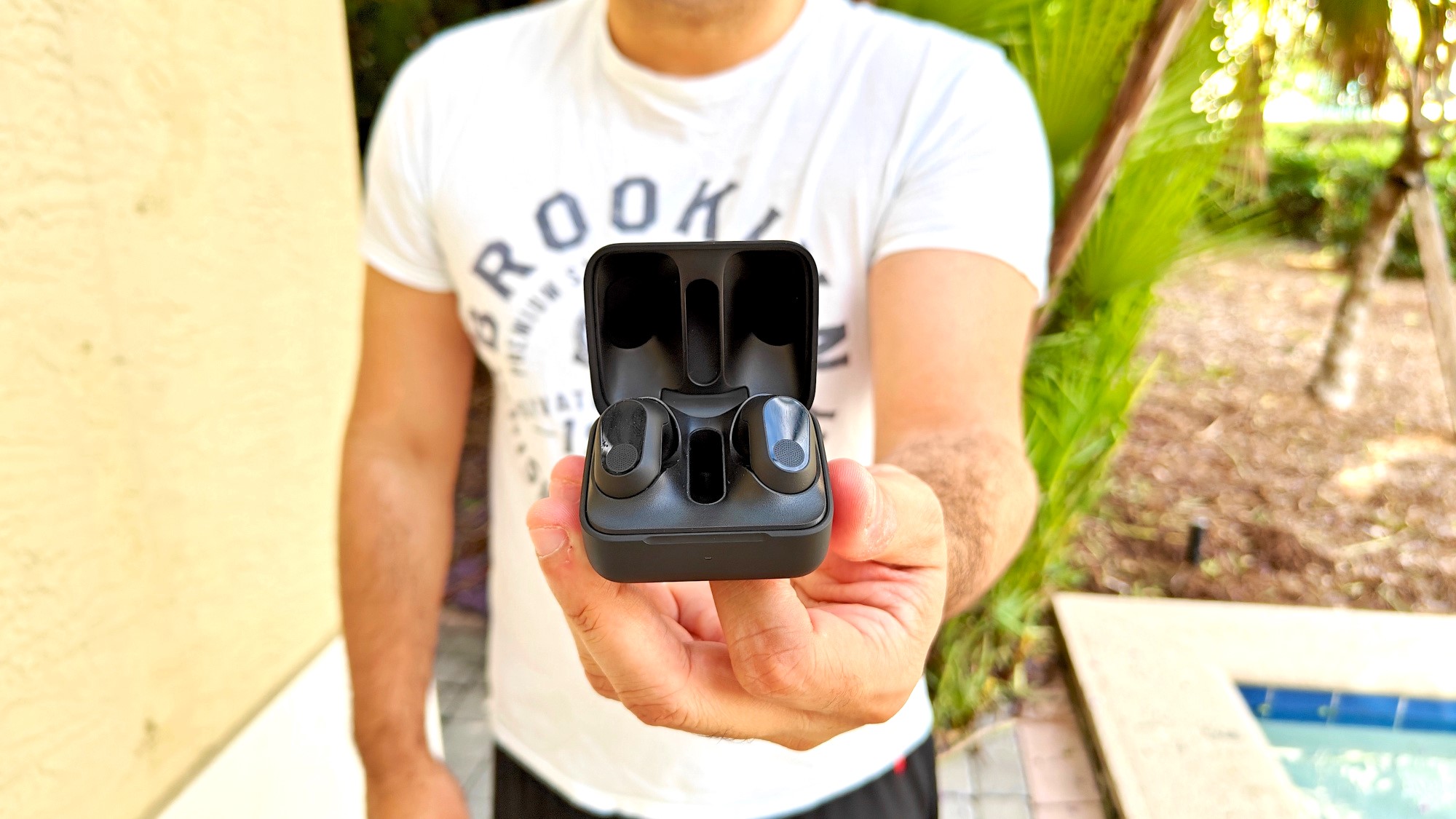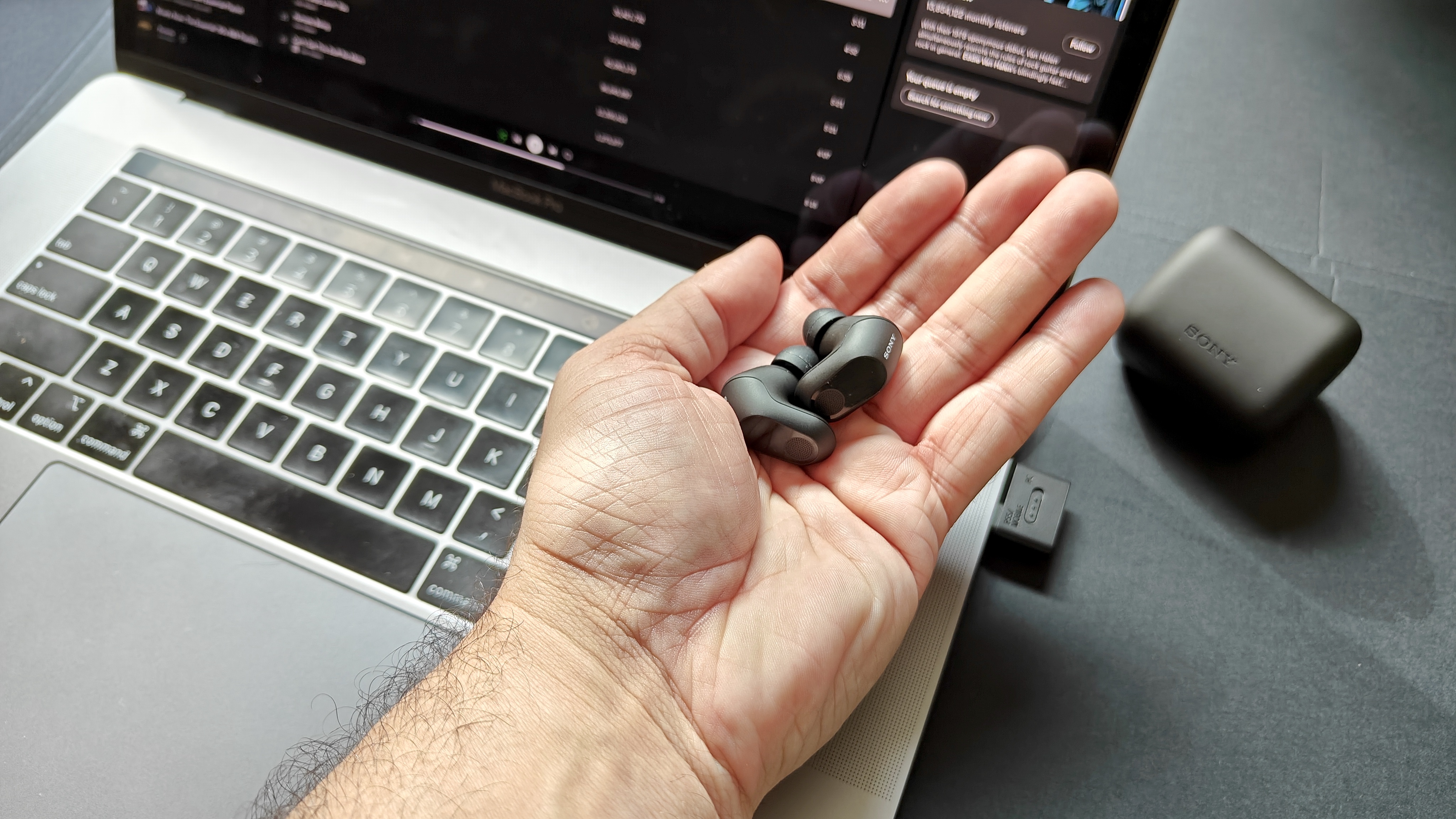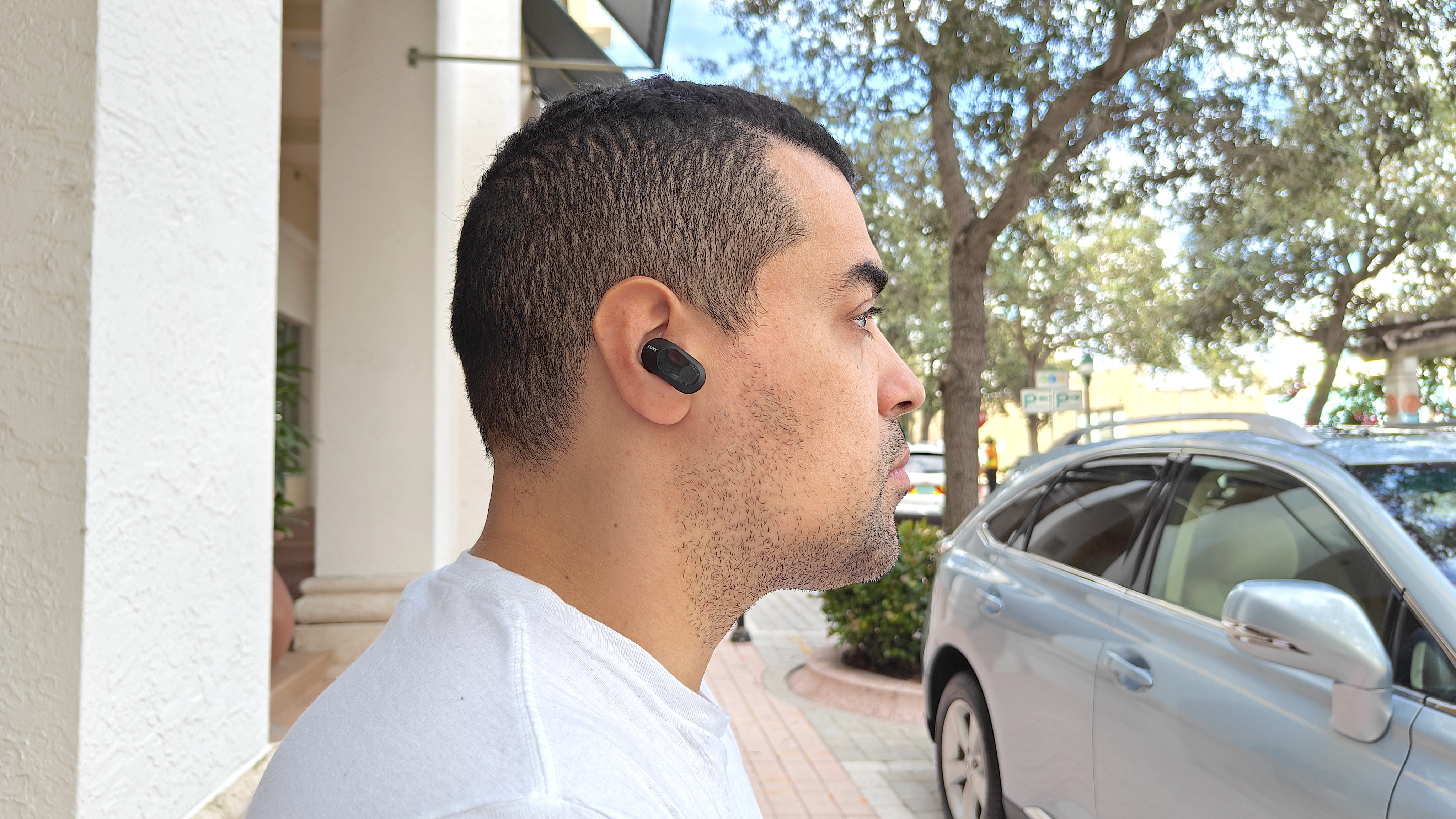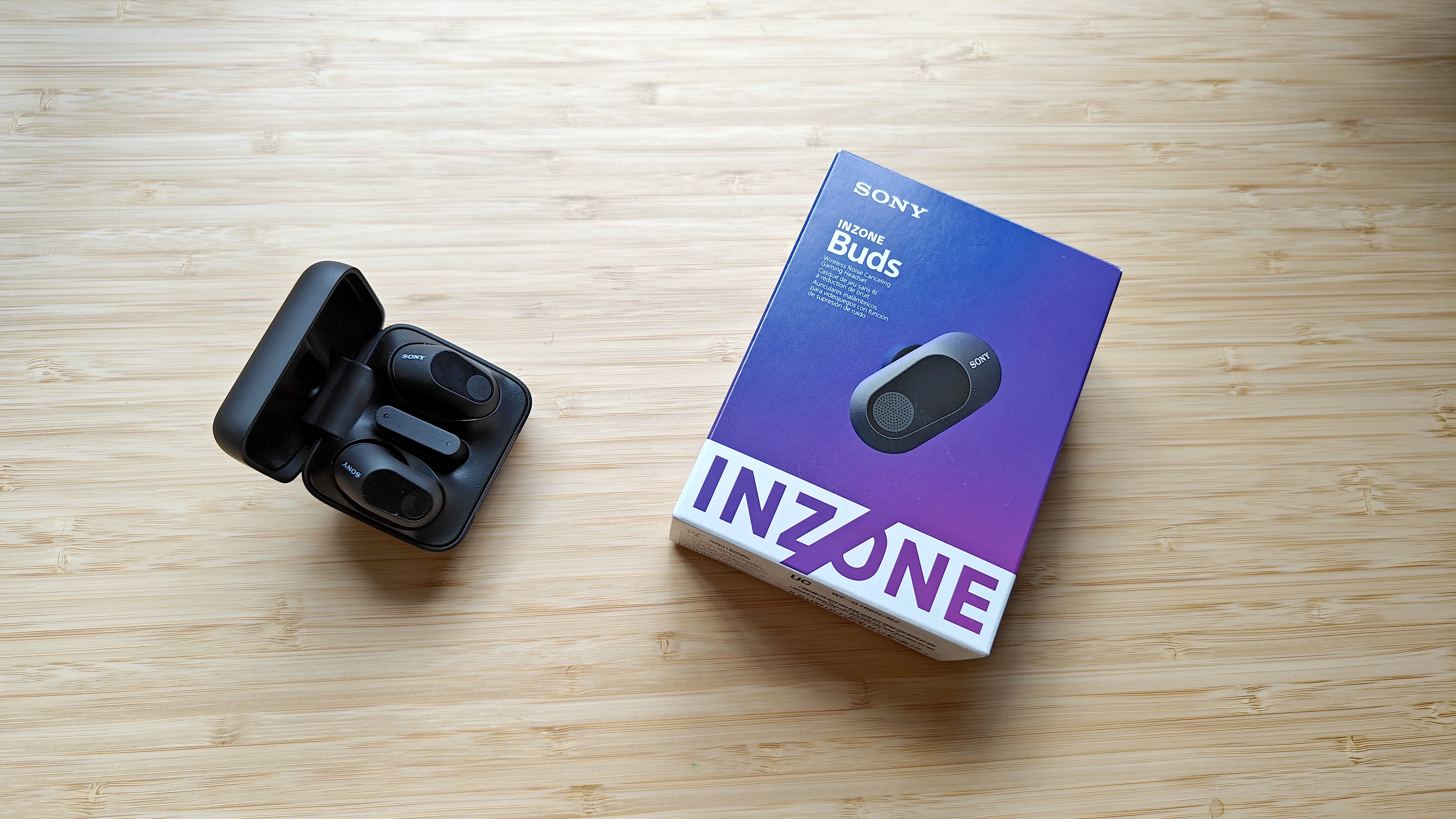
As if launching several of the best wireless earbuds this year wasn’t enough, Sony rolled out a new lineup of audio gaming peripherals under their InZone sub-brand that includes the highly anticipated InZone Buds. Design-wise, these buds are a callback to the brand’s early true wireless releases, specifically the WF-1000XM3, which boasted a thick and elongated frame with touch panel on the front. They’re currently available for $199 in black or white/black from the Sony store and Amazon; the latter color scheme pays homage to the PlayStation 5.
The InZone Buds are more than just an accessory to enhance the PlayStation auditory experience when playing the best PS5 games. You can pair them via USB-C dongle with non-gaming consoles, including the best computers, best laptops, best phones, and best tablets.
Being an audio writer specializing in headphones, I’ve been curious to hear how the InZone Buds perform as standard wireless earbuds. Are they capable of filling in when my AirPods Pro 2 die? Could they produce the same audiophile results as the excellent Sony WF-1000XM5? Most importantly, do they provide the best of both audio worlds by equally serving gamers and music lovers?
I took these buds for a two-week test drive, and while some roads were smooth, others were bumpy and unexpected.
Now, let me preface this hands-on report by stating that my feedback does not include the PS5, nor Windows-operated machines (I own neither platform). I’m giving my direct opinions on what music sounds like when pairing these gaming buds with other popular devices such as iPhones, MacBooks, and Android smartphones.
With that said, here are my thoughts.
Sony InZone Buds: Adequate, but not ideal for Macs

There is no software support for macOS, so Mac users are left with minimal sound personalization tools. Thankfully, Sony’s sound profile is effective and performs surprisingly well considering the restrictions.
Sound was warm with elevated lows and treble. Kicks and snares banged against my eardrum with authority, as exemplary on nineties hip-hop and classic rock tracks. The thumping bass on LL Cool J’s “The Boomin’ System – The Underground Mix” created everlasting reverberation that remained heavy without ruining other effects or vocals. Van Halen’s “Panama” shot adrenaline through my body when hearing the open-chord bass riff, which sounded crisp and edgy, and blended superbly with explosive drums and striking cymbals.
I squeezed out a little more hi-fi sound through Tidal, where 16-bit to 24-bit tracks produced excellent resolution and sharper imaging. Everything sounded great. Turning on the platform’s desktop feature, Exclusive Mode, gave clarity a nice boost. The feature takes control of your machine’s DAC and automatically tweaks frequencies based on song selections.
However, there is a caveat, and it’s critical for playback. The volume function on your Apple desktop or laptop is disabled when pairing the buds in PC mode, which is the only way they’ll connect. Your only options are to adjust volume directly on the right bud or through the Apple Music/Spotify/Tidal music player.
Sony InZone Buds: Non-gaming buds sound better

The InZone Buds didn’t translate to mobile audio as well as Sony’s other high-performance buds like the WF-C700N and class-leading WF-1000XM5. That’s disappointing since the buds come Bluetooth LE Audio-ready.
I was shocked to hear bloated bass on basic ballads like *NSYNC’s cover of “Sailing.” The low end came on too aggressive and diminished the record’s soothing midrange. This was the case with many Apple Music and Spotify tracks.
Music sounded much better on Tidal, which is capable of streaming hi-res tracks at a up to a whopping 9,216kbps. I tested many of the same records and enjoyed cleaner presentation with greater clarity and depth. Jimmy Hendrix’s “Burning of the Midnight Lamp” was a funky listen that reproduced the distorted wah wah riffs superbly. Even the lo-fi vocals were improved and made Hendrix’s preaching much clearer. Up-tempo tracks like Bad Bunny’s “Un Preview” were also well represented, as the gaming-inspired synths and head-nodding drums stimulated rhythmic reggaeton vibes.
Not developing an iOS or Android app for this product was a poor decision. The least that Sony could have done was make the buds compatible with their amazing Headphones Connect app to perform basic sound tweaks, maybe even incorporate key features like DSEE to upscale lo-fi recordings. None of that is available.
Sony says their 360 Spatial Sound Personalizer app is compatible with the InZone Buds. If only it worked. After completing the ear-scanning process, the screen stayed frozen and didn’t allow me to do anything. I force-closed the app and got confirmation about my scans being saved on their server, only to have to go through everything again.
Sony InZone Buds: PC mode isn’t exclusive to PCs after all

Something I learned the hard way was that the InZone Buds only work with Bluetooth 5.3-compatible devices that support LE Audio (LC3 codec). I spent a lot of time figuring out why they wouldn’t connect to my OnePlus 11. Sony confirmed that my smartphone wasn’t LE Audio compatible, but that the buds would still work in PC mode. This information has not been shared in a press release or online forum.
Would you believe that audio performed better on Android devices in PC mode than it did PS5/Mobile mode? I kid you not. When streaming the same tracks, sound was brighter, but still energetic with bass remaining tight. Mid-range instruments and vocals were transparent, and percussive elements packed a nice punch. Fidelity was also noticeably higher on Tidal tracks.
Sony InZone Buds: Outlook
It’s tough rating the InZone Buds’ overall audio performance without accessing the InZone hub (Windows only), which hosts a plethora of features: ANC adjustment, customizable EQ, connectivity prioritization, dynamic range, volume balance, and more.
What I will say is that the experience is bittersweet based on what’s delivered right out of the box. I’m impressed by how great the buds sounded on my MacBook, but I hate that volume can only be adjusted on the buds or select music players. Listening to music on my OnePlus 11 via PC mode was pleasant, but was mostly unsatisfying on my iPhone 14 and Samsung Galaxy S23 Ultra in PS5/Mobile mode. Something else worth mentioning is that you have to remove your smartphone case for the dongle to fit properly.
The InZone Buds’ active noise cancellation was stronger than I anticipated and did a commendable job of eliminating low and mid-frequency noises from the soundscape. Ambient Sound was weak and provided very little awareness.
Essentially, the InZone Buds serve very little purpose unless you own a Windows-operated PC and a PS5 or the upcoming PlayStation Portal handheld console, which will surely support all InZone products. Sony’s regular wireless earbuds are much more practical for music listening and sound leagues better than their gaming brethren. They also take advantage of proprietary technologies (e.g., DSEE, LDAC) that would have increased the InZone Buds’ sonic value had they been included.







